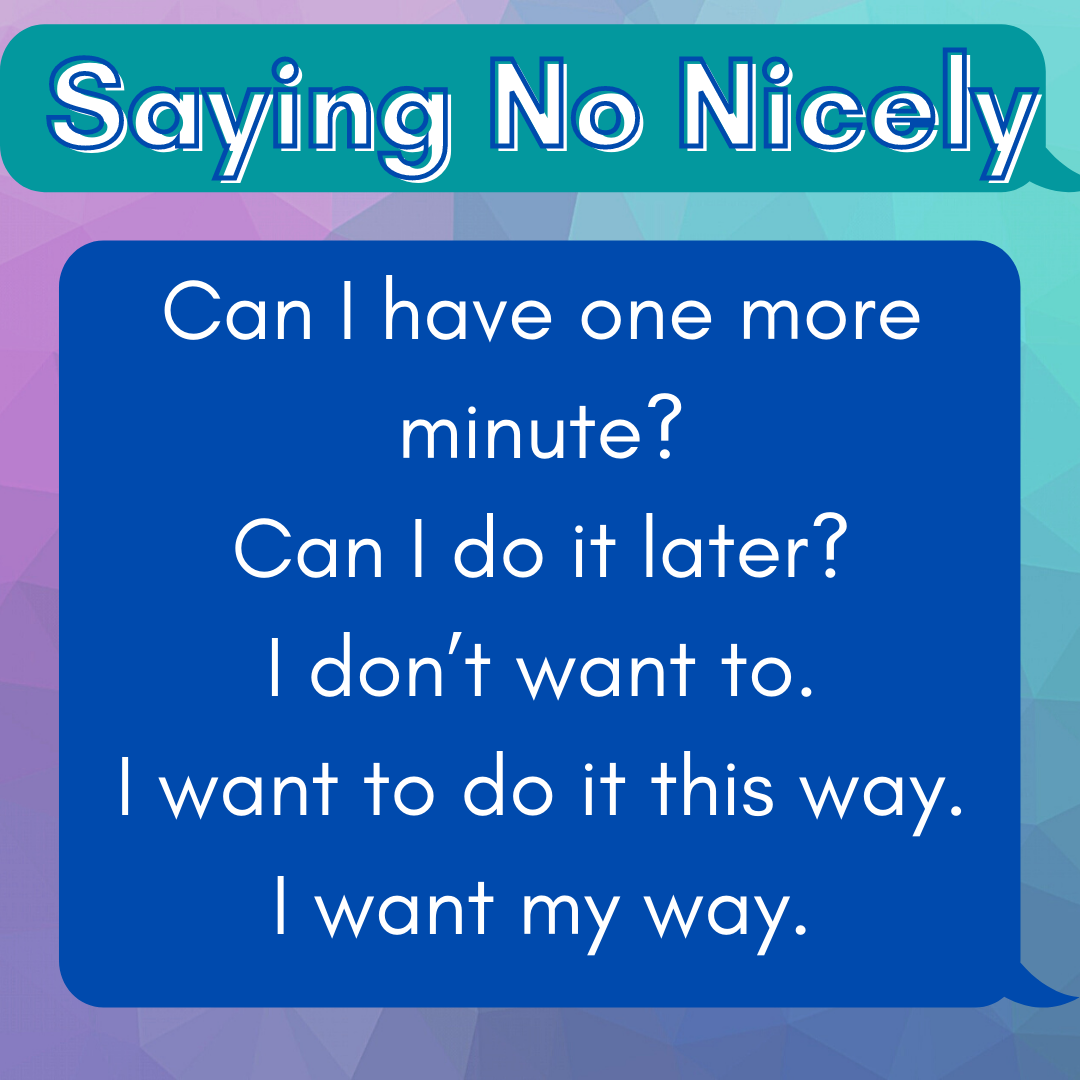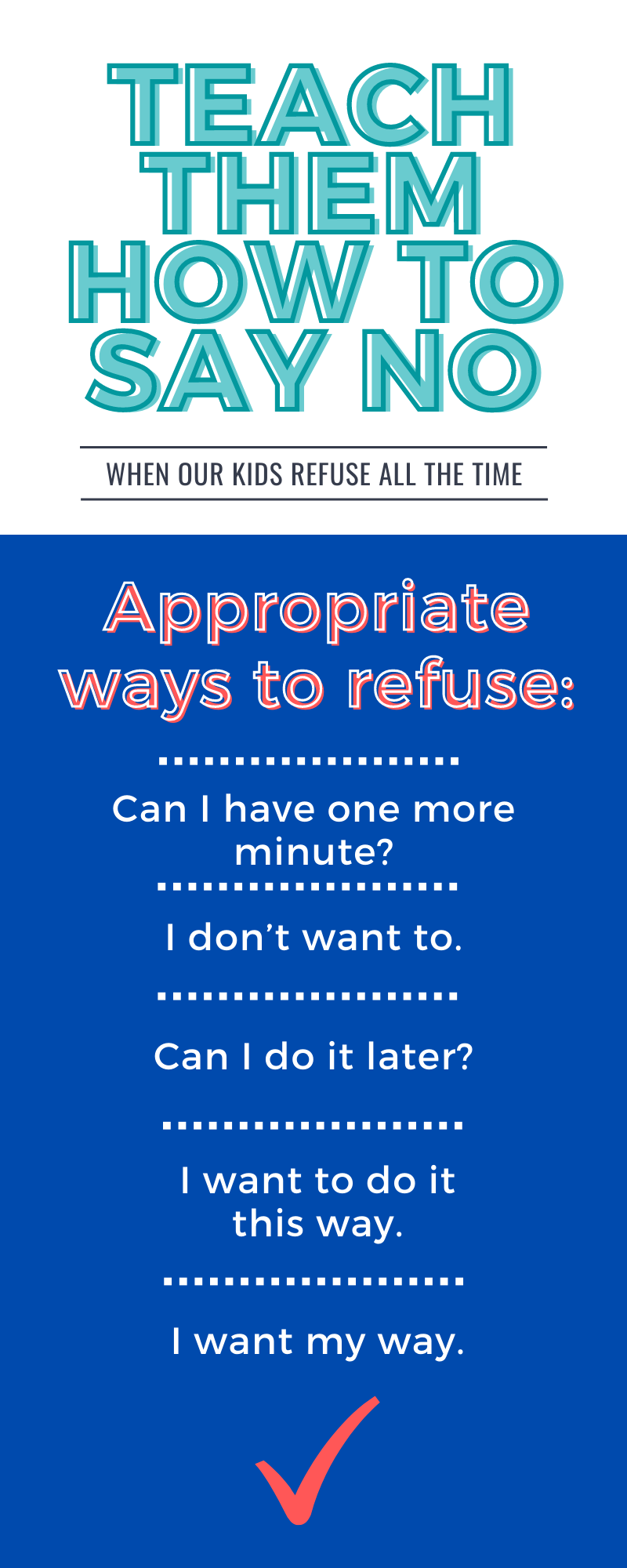When you ask your child to do something and they flat out refuse, what do you do?? What do we do about that word ‘NO’?!
First of all, the goal of using behavior tools is NOT blind compliance. We don’t want our kids to be little robots without a backbone.
We want our kids to be able to stand up for themselves, so we can teach them how to do that appropriately starting right now at home. It is okay for our kids to want to refuse something. It is not okay for them to have extreme tantrums because of it. It’s our job to teach them to refuse in a better way.
Give them the words they are lacking when they really just don’t want to do something.
Teach them to refuse appropriately:
- “Can I have one more minute?”
- “Can I do it later?”
- “I don’t want to.”
- “I want to do it this way.”
- “I want my way.”

Choose a simple sentence or phrase and model it for them. Prompt them in the moment by saying the words first and having them repeat it.
Honor this as often as possible. Give them a say in how things will get done or give them an extra minute to do their preferred thing first. When you can’t give in to the appropriate refusal request, give some other positive reinforcement for asking nicely.
When you can’t honor the request, say something like this:
“I love how you asked, by right now we don’t have enough time. I appreciate your nice words.”
“We can’t do that right now, but I want to give you a reward for asking so nicely though.”
“Thank you for telling me nicely. Here are our options right now…”
“Thank you for saying it that way. We can do it your way later when we have more time.”
Prioritize.
Make sure you aren’t just rattling off instructions all day long that your kid is just going to refuse. Prioritize. Save the must-dos for things that really really need to happen. Everything else- give your child options. Give them a say in how it’s going to go and let them have a voice in what that will look like.
Make it easier for them to follow directions.
Finally, make things easier for your child. Decrease the response effort. Think of ways to make everyday instructions easier to follow. Decrease the amount of effort it takes your kids to follow your typical instructions. Move stuff around in your house, add visuals, give prompts- whatever you can to make it easier.
For example- make sure all the school supplies for the day are within reach so you aren’t asking your child to go find something in the middle of virtual school time. Or keep their shoes near the door so when it’s time to go they aren’t needing to run all the way back to their closet, wasting time, getting distracted, and taking more effort to follow your daily directions.
Take note of when the refusals happen most often- and then brainstorm outside the box ideas of how to make that task easier for your child. Do they forget steps in the morning routine? Hang up a visual schedule reminder. Do they hate unloading the dishwasher before breakfast? Trade chores with them or have them unload the dishwasher after breakfast instead.
When our kids refuse to follow directions there are a few things we can do:
- Teach them to refuse appropriately. Help them use their voice in a positive way.
- Prioritize what we’re asking of them and then use controlled choices.
- Make it easier for our kids by decreasing response effort.
- And always give positive reinforcement for following instructions AND for refusing nicely.
You got this, mama!
Want a cheat sheet of this info PLUS 2 more topics to help get your children to listen? You can get it free and sent right to your inbox!



Recent Comments